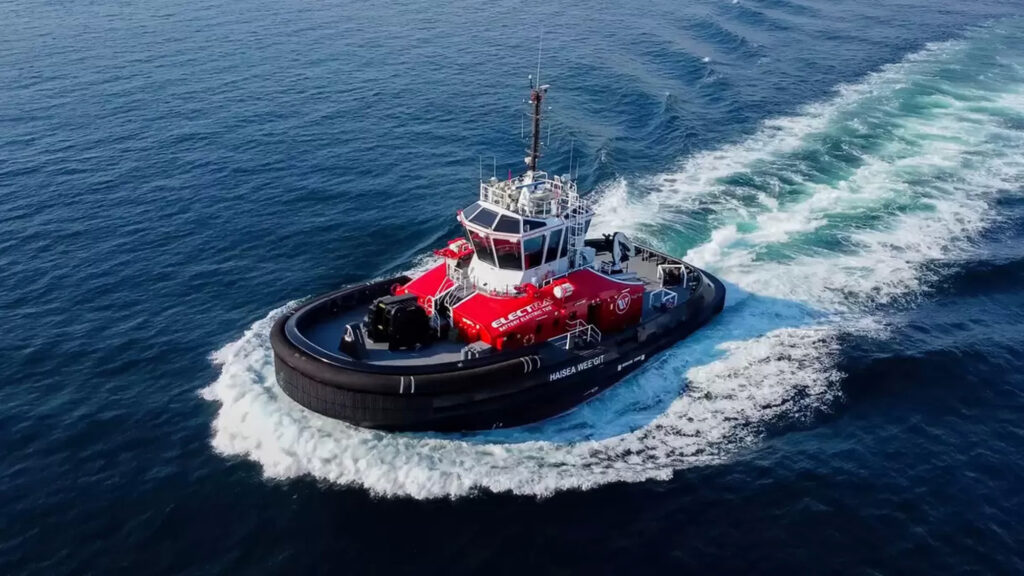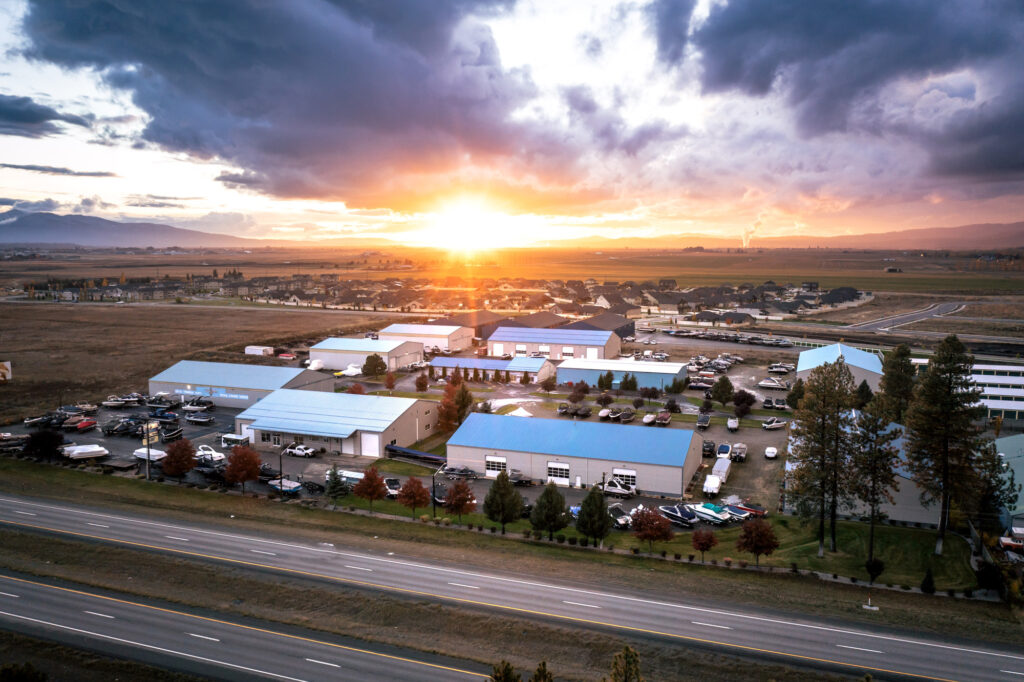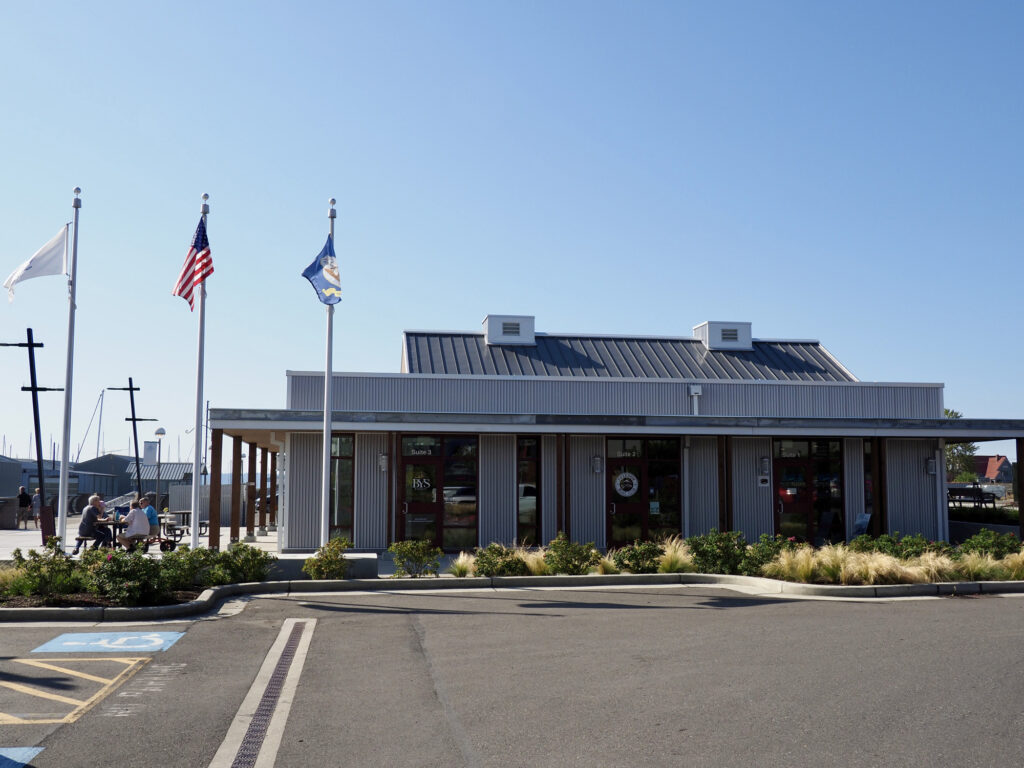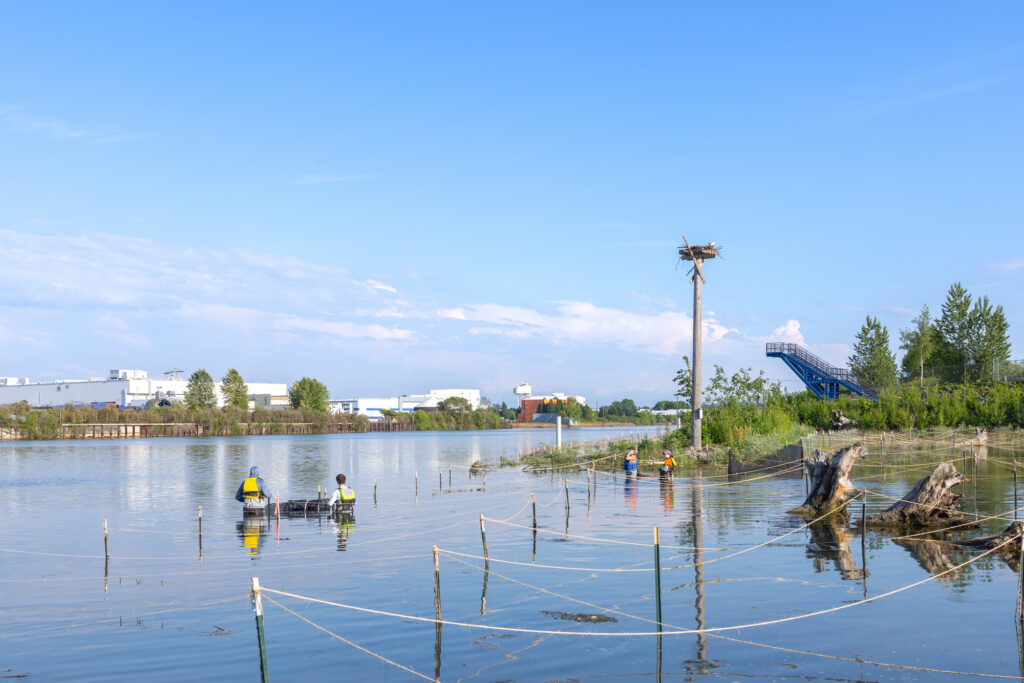
[ electric charge ]
B.C. Makes History with World’s First All-Electric Tugboat Fleet
The recent launch of the world’s first two all-electric tugboats by a unique partnership in British Columbia is part of an aggressive effort to reduce maritime-related carbon emissions that, hopefully, will continue not only in Canada, but around the globe.
The HaiSea Waimas and the HaiSea Wee’git, launched in July and August respectively, are the first two battery-powered tugs to be put into service in the B.C.’s North Shore region by HaiSea Marine, a joint-partnership between Vancouver-based Seaspan Marine Transportation, Corvus Energy of Norway, and the government of Canada’s indigenous Haisla Nation. A third electric tug, the HaiSea Brave, is expected to arrive in the area within the next six to eight weeks.
The ships are ElectRA 2800 SX series tugs designed by Vancouver-based naval architecture firm Robert Allan Ltd. and constructed in the Sanmar Shipyards in Turkey. Both vessels use 6,000 kWh batteries for their electric motors, which can produce about 7,000 hp and 70 metric tons of bollard pull while producing zero carbon emissions during operations.
Measuring 93’ in length and about 42’ abeam, the tugs have a top speed of 12 knots and can perform all ship berthing and unberthing missions on battery power alone. The batteries can be recharged in a matter of hours at the dock, using clean energy provided by B.C.’s extensive hydro-electric power grid.
The Haisla Nation’s role in the development of the electric tugs is the result of negotiations with Seaspan to make the region’s tugboats more environmentally sustainable. In exchange for the agreement to use electric tugs, the Haisla Nation’s approved the permitting of Kitimat, B.C., as the base of LNG Canada’s new marine export terminal and the site of HaiSea Marine’s floating tug maintenance facility. The two current tugs now operate out of Kitimat, providing ship assist and escort services to LNG carriers.
HaiSea estimates that the three-tug fleet, once fully operational, should reduce carbon-dioxide emissions by 10,000 metric tons per year, compared with comparable diesel-powered vessels, as well as significant reductions of nitrous oxide, sulfur oxide, carbon monoxide, and particulates.
Aside from the obvious environmental benefits of using electric power, the HaiSea vessels also operate without the large smokestacks often seen on traditional diesel boats, so they have unobstructed views from anywhere on the vessel, which aid in the tugs’ maneuverability when escorting multiple boats. The much quieter electric engines are more responsive to helm controls and produce roughly 33 percent less underwater noise than conventional tugs, which make them less harmful to sensitive marine life in the region.
Although the initial costs to build the HaiSea Marine tugs vessels are higher than those of traditional tugs, Seaspan estimates that the cost savings in reduced fuel and operational expenses will make the zero-emission investments pay for themselves in about eight years.
While HaiSea Marine is a pioneer in the business of electric tugs, it will soon be joined by other ports around the world that are seeking more ecologically sound options. “Emissions-free harbor tugs are no longer just a dream,” said Sanmar’s chairman, Ali Gurun. “As you can imagine, we have had a lot of interest in the ElectRA series from operators around the world.” According to Sanmar, another 28 electric tugboats are now being built for the global market. The shipbuilder is expected to release another four ElectRA Series tugs this year to ports in South America, Norway, and Turkey.
For more details on the growing fleet, go to: haiseamarine.com.

[ expansion team ]
Seattle Boat Acquires Idaho Marina, Expands Operations in the Northwest
Marine dealer Seattle Boat Co. has expanded its operations eastward, following the purchase in September of Tobler Marina in Hayden, Idaho, and the representation of several more boat brands across the Pacific Northwest.
In addition to absorbing much of Northern Idaho’s inland marine business, Seattle Boat Co., which has five locations in the greater Seattle area, now represents several new boat manufacturers in the region. The expanded list includes Bennington Pontoon Boats, Chaparral Boats, Duckworth Boats, Moomba Boats, Nautique Boat Co., and Supra Boats—all of which had been represented by Hayden. The award-winning Seattle Boat is also the exclusive dealer for Barletta Pontoon Boats, Cobalt Boats, and Malibu Boats.
Tobler Marina, situated between Harrison Slough to the south, Lake Hayden to the east, and Lake Pend Oreille to the north, was established in 1948 and is the oldest certified marine dealer in the Northern Idaho and Spokane, Washington, region. As one of the area’s largest boat dealerships, with three locations in Hayden, Coeur d’Alene, and Post Falls, Idaho, it also offers parts, service, canvas, upholstery, fiberglass repair, and marina slips at four different marinas in the large nearby lakes.
The welcome move comes after Seattle Boat weathered a rough spring season, marred by a massive fire in March that destroyed 58 boats at its storage facility on Lake Union and damaged at least 10 other vessels. The fire, involving two storage racks that collapsed in the flames, was ruled to be arson, costing $8.5 million in damages. Seattle Boat Co. has been in business for nearly 40 years, with operations that include new, used, and consignment boat sales, service and parts, marina slips, Skylaunch moorage, boat clubs, and fuel docks.
For more details on the expansion, and Seattle Boat Co., go to: seattleboat.com.

[ open for business ]
Waterline Boats Opens New Sales Offices in Everett
Seattle’s Waterline Boats is spreading its breadth across Puget Sound this year, with the August opening of a new sales office on the Port of Everett’s rapidly changing waterfront. This growth now gives the brokerage three brick-and-mortar offices in the region, the others being the Seattle flagship location and an expansion to Port Townsend three years ago.
Waterline’s newest office is located near J and K Docks at Everett’s new Waterfront Place development, offering display slips for sail and power boats at the Port’s marina. The office is also near the city’s promenade area and other popular attractions, such as Fisherman Jack’s restaurant, The Muse Whisky & Coffee Bar, and the Indigo Hotel, giving it the possibility of notable foot traffic in the region.
The Everett opening “has been a long time coming,” said Lisa Helker, vice president of Waterline, adding that the brokerage office first broke ground at the Port of Everett in 2017. Welker said the Port has plenty of amenities to increase its business, especially in recent years during the ongoing re-development of its waterfront.
Waterline Boats, the home port for Helmsman Trawlers in the Northwest, was founded in Seattle’s Lake Union in 2008 and is a member of Boatshed Everett, which is operated by the Boatshed International Yacht Brokerage group. Before the 2020 opening of the Port Townsend location, the company had been operating as a mobile brokerage in the area for several years, Helker said. Waterline specializes in trawler-style yachts, but also has experience selling sailboats, motor yachts, and “all varieties of vessels,” she added.
Flip to the Broker’s Best feature on page 46 to learn more about one of the brokerage’s current listings, and for more on Waterline Boats in general, go to: waterlineboats.com.

[ saving the waterways ]
Duwamish Waterway Habitat Bounces Back at ‘People’s Park’
In a rare bit of good environmental news for the South Sound region, the health of estuarine habitat appears to be improving along Seattle’s most heavily trafficked waterway, thanks to an environmental improvement project called the Duwamish River People’s Park (DRPP).
Heralded as the largest restoration project on the Duwamish River in a generation, DRPP began more than 20 years ago, when the Port of Seattle’s old Terminal 117 was converted from a post-industrial site into a 14-acre nature habitat. A coalition of Duwamish Valley residents, government agencies, and local Tribes collaborated on cleaning up the site, which had been degraded and re-channeled for the previous 100-plus years, destroying roughly 99 percent of the area’s wetlands and native flora and fauna.
The DRPP’s restoration efforts included demolishing obsolete structures, removing pavement and 60,000 tons of contaminated soil and sediment, and replanting 40,000 native plants on the property. The team also added a public viewpoint pier, walking trails, interpretive art, and a hand-carry boat launch.
As a result of the improvements, a team of Port environmental staff, fish biologists, and University of Washington researchers recently found more than 7,000 juvenile chum salmon, nearly 250 natural-origin Chinook salmon, over 900 non-salmonid fish, and salt-water marsh vegetation, including bulrush and beachgrass, that increased 40 percent over the life of the project. Today, the park also serves as a “learning lab for youth seeking hands-on experience,” according to the World Ports Sustainability Program.
“Community engagement and environmental stewardship are making a difference for Seattle’s only river and those who live along its shores,” said Ryan Calkins, a Port of Seattle Commissioner. “There is still so much to do to support a clean and healthy Duwamish River, but we have the right community and environmental experts working together.”
The Port’s 10-year monitoring program measures several variables at the DRPP site, such as wildlife presence, site stability, carbon sequestration, and vegetation health. The newly restored marsh vegetation will help protect fish from predators, remove pollution from the water, and support an ecosystem that provides an abundance of food for spawning fish in the waterway.
The People’s Park program was established with an innovative funding model as well, called a “habitat credit bank,” which enables third parties to purchase “mitigation credits” to help them comply with national regulations. Revenue from the sales of these credits can be used to fund additional habitat restoration projects.
For more information, go to: portseattle.org/projects/duwamish-river-peoples-park.